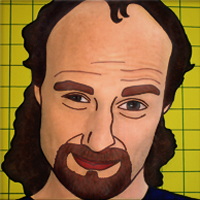article
.container / .row-fluid / article span8 .well

.container-fluid {max-weight:1210px;} / .row-fluid / header .well
.container / .row-fluid / section .well
.container / .row-fluid / article .span8 .well
Die Seite "Bootstrap Grid spanX" zeigt das Grid-Layout von Bootstrap 2.3.2 .
Das Layout ist gepaart mit "content" und "content-fluid". Das "row" kommt hier nicht drin vor. Es wird nur das "row-fluid" benutzt.
In den "row-fluid" sind die "spanX" enthalten, und für einen leer Abstand die "offsetX".
Das "content.fluid" ist auf eine weite von 1210px begrenzt durch eine CSS Angabe max-weight. Das soll beim skalieren der Weite vom Browserfenster, die Eigenschaften zwischen "content" und "content-fluid" zeigen
Alle class der Bootstrap und alle HTML5 Elemente sind in den einzelnen Boxen angezeigt. Damit das Grid-Layout besser zu sehen ist wurde das "well" von Bootstrap mit eingesetzt.
Kurz zur Erleuterung der Angaben in den well-Boxen möchte ich noch sagen, das ein / die tiefere Ebene eines DIV bzw. HTML5-Elementes anzeigt. Was in den {...} dazu steht ist die CSS angabe zu jenem.
Ich persönlich arbeite so am liebsten mit dem Grid-Layout von Bootstrap 2.3.2 . Es ist einfach und dadurch auch übersichtlich. Es gibt nicht wirklich nachteile dadurch, das man nur das "row-fluid" benutzt, den das "content" begrenzt es ja statisch, und das "content-fluid" dynamisch.
Zumindest sind mir hier noch keine aufgefallen. *schmunzel*
.container / .row-fluid / section .span3 .well
.container / .row-fluid / section .span3 .well
.container / .row-fluid / section .span3 .well
.container / .row-fluid / section .span3 .well
.container / .row-fluid / section .span4 .well
.container / .row-fluid / section .span4 .well
.container / .row-fluid / section .span4 .well
.container / .row-fluid / section .span6 .well
.container / .row-fluid / section .span6 .well
.container / .row-fluid / section .span2 .well
.container / .row-fluid / section .span2 .well
.container / .row-fluid / section .span2 .well
.container / .row-fluid / section .span2 .well
.container / .row-fluid / section .span2 .well
.container / .row-fluid / section .span2 .well
.container / .row-fluid / section .span5 .well
.container / .row-fluid / section .span7 .well
.container / .row-fluid / section .span3 .offset1 .well
.container / .row-fluid / section .span5 .offset2 .well
.container / .row-fluid / section .span4 .offset8 .well